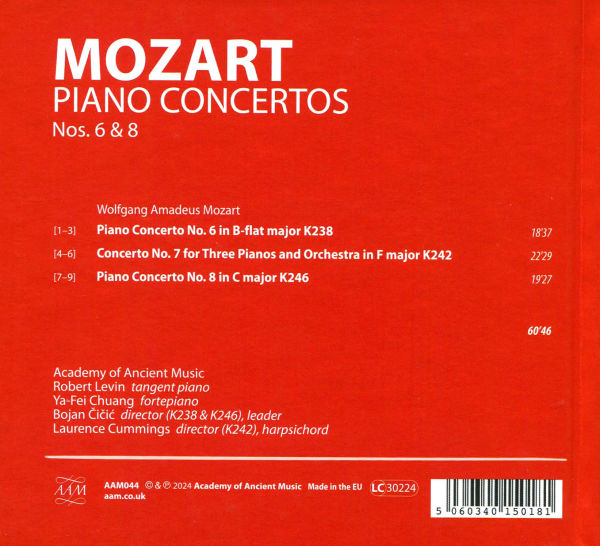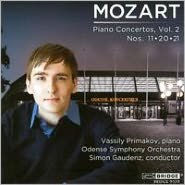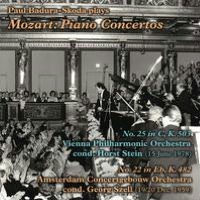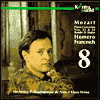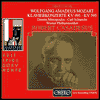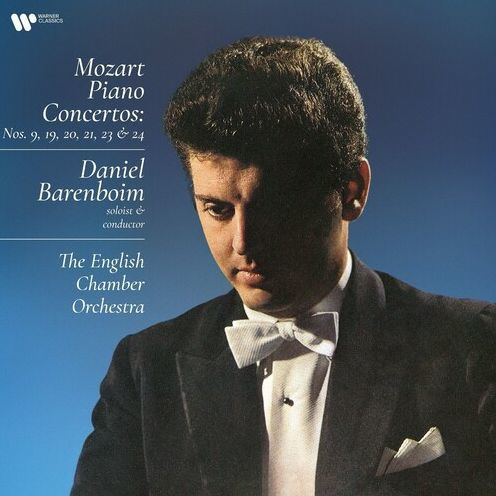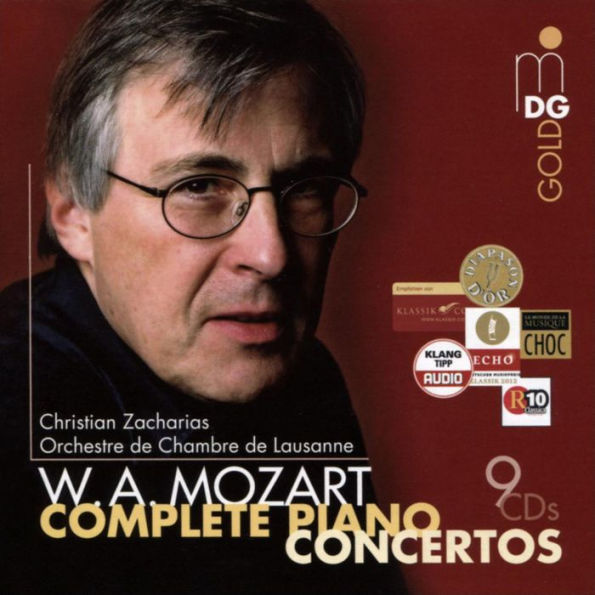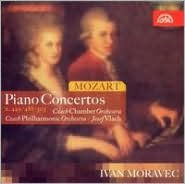Home
Mozart: Piano Concertos K238, K242, K246
Barnes and Noble
Loading Inventory...
Mozart: Piano Concertos K238, K242, K246 in Bloomington, MN
Current price: $28.99

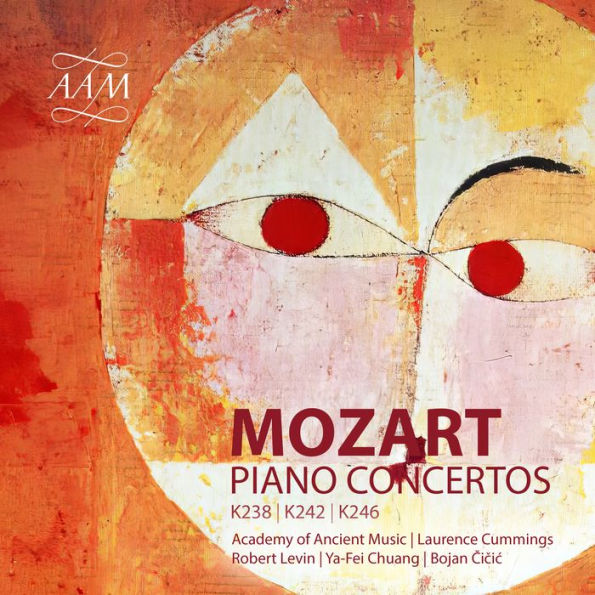
Mozart: Piano Concertos K238, K242, K246 in Bloomington, MN
Current price: $28.99
Loading Inventory...
Size: OS
This 2024 release, which made classical best-seller charts early that year, is the next-to-last installment in a series of
Mozart
piano concertos by the
Academy of Ancient Music
that began in the 1990s, was abandoned in 2000, and was finally resumed during the COVID-19 pandemic. The collection features the unorthodox
pianist
Robert Levin
, with various directors supplanting the original creator,
Christopher Hogwood
; here, keyboardist
Laurence Cummings
and violinist
Bojan ¿i¿i¿
share conducting duties. There are three piano concertos, numbers six through eight, all composed in 1776. The central figure is
Levin
, who, as usual, contributes several novelties. One is a tangent piano. This instrument, somewhere between a fortepiano, a harpsichord, and a clavichord, is rarely heard;
might have known them, although there is no evidence that he did. It is capable of modest dynamic variation, and the late 18th century instrument
plays here has a charming, crystalline sound. Beyond this is
's trademark heavy use of improvisation, which has at least some justification in what is known of
's own practices;
improvises his own cadenzas, as
certainly did, and these are attractively integrated with the main material. The
Piano Concerto No. in F major for three pianos and Orchestra, K. 242
, is a special and perhaps troublesome case;
and
Cummings
deploy three different keyboard instruments:
's tangent piano, a fortepiano (played by
Ya-Fei Chuang
), and a harpsichord (
). This technically undemanding concerto is generally played with three similar instruments, whether modern pianos or fortepianos and the interpretation takes another step into the speculative. In general, however, this release, like its predecessors, offers fresh and thought-provoking
readings. ~ James Manheim
Mozart
piano concertos by the
Academy of Ancient Music
that began in the 1990s, was abandoned in 2000, and was finally resumed during the COVID-19 pandemic. The collection features the unorthodox
pianist
Robert Levin
, with various directors supplanting the original creator,
Christopher Hogwood
; here, keyboardist
Laurence Cummings
and violinist
Bojan ¿i¿i¿
share conducting duties. There are three piano concertos, numbers six through eight, all composed in 1776. The central figure is
Levin
, who, as usual, contributes several novelties. One is a tangent piano. This instrument, somewhere between a fortepiano, a harpsichord, and a clavichord, is rarely heard;
might have known them, although there is no evidence that he did. It is capable of modest dynamic variation, and the late 18th century instrument
plays here has a charming, crystalline sound. Beyond this is
's trademark heavy use of improvisation, which has at least some justification in what is known of
's own practices;
improvises his own cadenzas, as
certainly did, and these are attractively integrated with the main material. The
Piano Concerto No. in F major for three pianos and Orchestra, K. 242
, is a special and perhaps troublesome case;
and
Cummings
deploy three different keyboard instruments:
's tangent piano, a fortepiano (played by
Ya-Fei Chuang
), and a harpsichord (
). This technically undemanding concerto is generally played with three similar instruments, whether modern pianos or fortepianos and the interpretation takes another step into the speculative. In general, however, this release, like its predecessors, offers fresh and thought-provoking
readings. ~ James Manheim
This 2024 release, which made classical best-seller charts early that year, is the next-to-last installment in a series of
Mozart
piano concertos by the
Academy of Ancient Music
that began in the 1990s, was abandoned in 2000, and was finally resumed during the COVID-19 pandemic. The collection features the unorthodox
pianist
Robert Levin
, with various directors supplanting the original creator,
Christopher Hogwood
; here, keyboardist
Laurence Cummings
and violinist
Bojan ¿i¿i¿
share conducting duties. There are three piano concertos, numbers six through eight, all composed in 1776. The central figure is
Levin
, who, as usual, contributes several novelties. One is a tangent piano. This instrument, somewhere between a fortepiano, a harpsichord, and a clavichord, is rarely heard;
might have known them, although there is no evidence that he did. It is capable of modest dynamic variation, and the late 18th century instrument
plays here has a charming, crystalline sound. Beyond this is
's trademark heavy use of improvisation, which has at least some justification in what is known of
's own practices;
improvises his own cadenzas, as
certainly did, and these are attractively integrated with the main material. The
Piano Concerto No. in F major for three pianos and Orchestra, K. 242
, is a special and perhaps troublesome case;
and
Cummings
deploy three different keyboard instruments:
's tangent piano, a fortepiano (played by
Ya-Fei Chuang
), and a harpsichord (
). This technically undemanding concerto is generally played with three similar instruments, whether modern pianos or fortepianos and the interpretation takes another step into the speculative. In general, however, this release, like its predecessors, offers fresh and thought-provoking
readings. ~ James Manheim
Mozart
piano concertos by the
Academy of Ancient Music
that began in the 1990s, was abandoned in 2000, and was finally resumed during the COVID-19 pandemic. The collection features the unorthodox
pianist
Robert Levin
, with various directors supplanting the original creator,
Christopher Hogwood
; here, keyboardist
Laurence Cummings
and violinist
Bojan ¿i¿i¿
share conducting duties. There are three piano concertos, numbers six through eight, all composed in 1776. The central figure is
Levin
, who, as usual, contributes several novelties. One is a tangent piano. This instrument, somewhere between a fortepiano, a harpsichord, and a clavichord, is rarely heard;
might have known them, although there is no evidence that he did. It is capable of modest dynamic variation, and the late 18th century instrument
plays here has a charming, crystalline sound. Beyond this is
's trademark heavy use of improvisation, which has at least some justification in what is known of
's own practices;
improvises his own cadenzas, as
certainly did, and these are attractively integrated with the main material. The
Piano Concerto No. in F major for three pianos and Orchestra, K. 242
, is a special and perhaps troublesome case;
and
Cummings
deploy three different keyboard instruments:
's tangent piano, a fortepiano (played by
Ya-Fei Chuang
), and a harpsichord (
). This technically undemanding concerto is generally played with three similar instruments, whether modern pianos or fortepianos and the interpretation takes another step into the speculative. In general, however, this release, like its predecessors, offers fresh and thought-provoking
readings. ~ James Manheim
